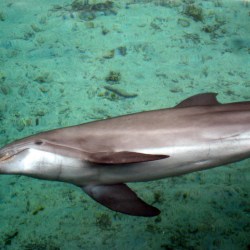Japanese Zoos And Aquariums Pledge To Stop Purchasing Live Dolphins From Taiji

Despite intense criticism of the hunting technique used, a news report says that roughly half of the live dolphins captured in the Japanese coastal town of Taiji were exported to China and other countries. The method is known as the “drive hunt” and has been criticised around the world as being cruel. The criticism was so intense that many Japanese zoos and aquariums were forced to pledge to refrain from buying animals captured through the controversial technique.
Dolphins sold all over the world
According to Kyodo News, an estimated 760 live dolphins were sold between 2009 and 2014 in Japan. The agency looked at data from the Japanese Fisheries Research Agency as well as other sources in order to come up with an estimate. The data suggests that 354 dolphins were sent to 12 countries, with 216 going to China, 35 to South Korea, 15 to Russia, 36 to Ukraine and a single dolphin went to the United States. Thailand, Vietnam, Saudi Arabia, Georgia, Tunisia, Egypt and the Philippines all took delivery of dolphins during the time frame.
Intense criticism
Data from the United Nations shows that all the dolphins that were exported from Japan between 2009 and 2013 almost entirely went to aquariums or zoos Kyodo news agency said. Live dolphins are supplied from Taiji which came to global attention following the Oscar winning documentary The Cove. The documentary shows pods of dolphins being forced into a bay and then slaughtered by knife in a mass killing which left the water red with blood.
Controversial hunting technique
Live dolphins are often captured as well and then sold on to zoos or aquariums that purchase them for about US$8,000. In May zoos and aquariums in Japan pledged to stop buying dolphins caught using the controversial technique as was demanded by the World Association of Zoos and Aquariums (Waza). The pledge was in response to Waza’s suspension of the Japanese chapter in April over the issue.
Practice not economically viable
Waza considers drive hunting fishing “cruel”. This is where pods of cetaceans are herded into a bay using a wall of sound and then slaughtered. Local fisherman reject the charge. Most of the dolphins are slaughtered for food, however activists say there is not enough demand for the meat which is not very popular to make the hunt economically viable. Activists claims the high prices for live dolphins suggest they are only thing that sustain the hunt.



